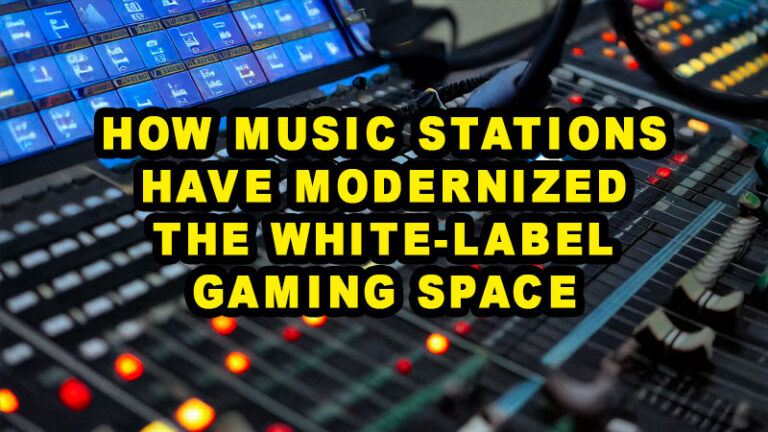At present, producing music from the comfort of your own bedroom has become not only feasible but increasingly popular. Advancements in technology and the affordability of equipment and software now provide aspiring musicians with the tools they need. They can bring their musical visions to life without ever leaving their homes.
However, while the accessibility of home music production is undoubtedly a boon, it also comes with its own set of challenges. Here are some tips to help you navigate the process and elevate your bedroom music production game.
Invest in Quality Equipment
While it’s possible to produce music with just a laptop and headphones, investing in quality equipment can significantly enhance the final product.
According to Careers In Music, setting up a home music studio will cost you around $1,000. Most of this money will be spent on your microphone and studio monitors. Consider purchasing a good pair of studio monitors or headphones to ensure accurate sound representation. A MIDI keyboard can also be a valuable addition, providing tactile control over virtual instruments and aiding in the composition process.
Also, don’t overlook the importance of a decent audio interface for capturing high-quality recordings of vocals and instruments.
Create a Comfortable and Inspiring Workspace
According to Forbes, numerous companies are currently adopting innovative office design elements, highlighting the crucial significance of cultivating engaging, collaborative workspaces. These environments not only boost productivity but also nurture a sense of community among employees, emphasizing the value of cohesive teamwork.
Since your bedroom doubles as your studio, it’s essential to turn it into a space that is conducive to creativity and productivity. Decorate the area with items that inspire you, whether it’s posters of your favorite artists, mood lighting, or plants. Consider investing in ergonomic furniture to ensure comfort during long hours of work.
By curating a space that feels welcoming and inspiring, you’ll find it easier to stay motivated and engaged with your music.
Understand the Basics of Music Production
You don’t need a formal education in music theory or production to create great music. However, having a basic understanding of these concepts can be immensely beneficial.
Familiarize yourself with fundamental music theory principles such as melody, harmony, and rhythm, as well as basic production techniques like mixing and mastering. For sound design and editing audio, you’ll also need to work with a few pro tools. More specifically, you’ll need to work with digital audio workstations (DAWs).
According to Rapid Flow, DAWs are software applications utilized by musicians, producers, and audio engineers, to facilitate music creation, recording, editing, and mixing. Revolutionizing the music production industry, these powerful tools offer a comprehensive platform, enabling both creative expression and technical precision.
Bitwig and Ableton are two of the most popular DAWs in the market right now. They regularly update their DAWs with new features and plugins. Each of them also has a massive user base. However, the Bitwig vs Ableton debate is a major one in the music production industry. Therefore, before you choose to opt for either one, do your research and compare the pros and cons they each offer.
Focus on Quality Over Quantity
At present, it might be tempting to prioritize quantity over quality and churn out as much music as possible in hopes of gaining traction.
In fact, according to Business Insider, people these days are creating music specifically for TikTok. That’s because this social media platform guarantees easy growth for musicians, so they keep trying to release more TikTok-friendly music.
Instead of rushing to release a new track every week, take the time to hone your craft and refine your sound. Pay attention to the details, from the composition and arrangement to the mixing and mastering. Solicit feedback from trusted peers and collaborators, and be open to constructive criticism.
By prioritizing quality over quantity, you’ll build a catalog of music that stands the test of time and earns you a dedicated fan base.
Frequently Asked Questions (FAQs)
How to make a room sound good for recording?
To improve a room’s acoustics, soundproofing to minimize external noise and adding acoustic treatments like bass traps and diffusers can greatly enhance audio quality. These adjustments create a more controlled environment for capturing pristine recordings.
What causes poor room acoustics?
Poor room acoustics can stem from hard, reflective surfaces causing excessive sound reflections and standing waves due to uneven room dimensions. Insufficient or improper treatment can further exacerbate these issues, leading to undesirable audio quality in recordings or listening environments.
Can a room be 100 percent soundproof?
Achieving 100 percent soundproofing in most rooms remains an unattainable goal. Nevertheless, with proper guidance, you can approach optimal sound isolation, coming as close to perfection as possible.
In conclusion, producing music in your bedroom is a rewarding and accessible pursuit. It allows you to express yourself creatively and share your music with the world. Therefore, keep the above tips in mind and let your creativity soar. You don’t have to go very far from your bedroom to do so.





